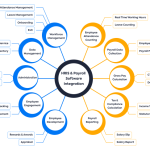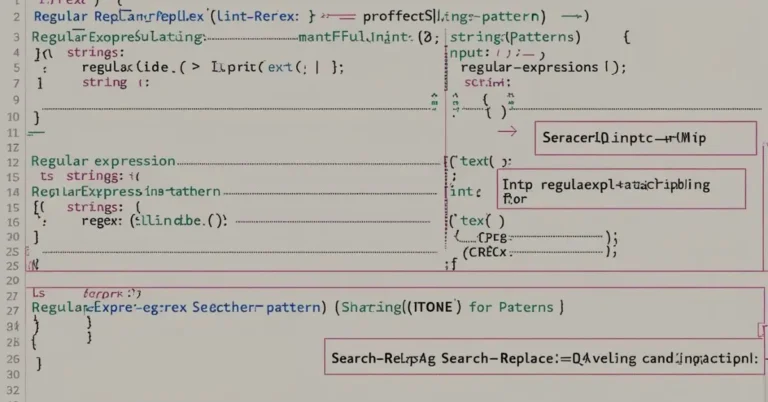However, for many developers and data analysts, crafting the perfect regex can be a daunting task. This is where Regex101 comes into play—a web-based tool designed to simplify the creation, testing, and understanding of regular expressions.
In this article, we will delve into the features, functionalities, and benefits of Regex101, providing a comprehensive guide on how to effectively use this tool to master the art of regex. Whether you’re a beginner or an experienced programmer, this guide will equip you with the knowledge needed to harness the full potential of Regex101.
Understanding Regular Expressions
Before diving into Regex101, it’s important to have a basic understanding of what regular expressions are and how they work. Regular expressions are sequences of characters that define a search pattern. These patterns are used to match strings of text, allowing you to find, replace, or manipulate data in a variety of ways.
Common Uses of Regular Expressions
- Text Search: Regex is often used to search for specific patterns in text, such as finding all email addresses within a document or identifying phone numbers.
- Data Validation: Regular expressions are commonly used to validate input fields in web forms. For example, you can use regex to ensure that a user enters a valid email address or a strong password.
- Text Manipulation: Regex allows for complex search-and-replace operations, making it possible to modify text based on patterns. This is particularly useful for tasks like reformatting dates or cleaning up data.
- Data Extraction: With regex, you can extract specific information from large datasets, such as extracting all URLs from a web page or retrieving specific values from a CSV file.
Basic Components of Regular Expressions
- Literal Characters: The simplest form of a regex pattern, where characters match themselves. For example, the pattern
catmatches the string “cat” in a text. - Metacharacters: Special characters that have a unique meaning in regex, such as
.(dot) for any character,^for the start of a string, and$for the end of a string. - Character Classes: A set of characters enclosed in square brackets
[]that matches any one of the characters in the set. For example,[abc]matches any of the characters “a”, “b”, or “c”. - Quantifiers: Specify how many instances of a character or group should be matched. Common quantifiers include
*(zero or more),+(one or more), and?(zero or one). - Groups and Alternation: Parentheses
()are used to group patterns, while the pipe symbol|represents alternation (logical OR). For example,(cat|dog)matches either “cat” or “dog”.
Introduction to Regex101
Regex101 is a powerful online platform designed to help developers, data scientists, and anyone working with text data to create, test, and understand regular expressions. The tool offers a user-friendly interface and a variety of features that make working with regex easier and more efficient.
Key Features of Regex101
- Interactive Regex Editor: Regex101 provides a real-time editor where you can write and test your regex patterns against sample text. As you type, the tool highlights matches and provides instant feedback, allowing you to see the effects of your regex in real-time.
- Detailed Explanation: One of the standout features of Regex101 is its ability to provide a detailed explanation of your regex pattern. This breakdown helps you understand how each component of your regex works and what it matches.
- Syntax Highlighting: The editor includes syntax highlighting, making it easier to differentiate between various components of your regex pattern, such as literals, metacharacters, and groups.
- Match Information: Regex101 displays detailed match information, including the matched text, its position in the string, and any captured groups. This feature is invaluable for debugging complex regex patterns.
- Test Strings: The platform allows you to test your regex patterns against multiple test strings. You can add, edit, and remove test strings as needed, enabling you to thoroughly test your regex in different scenarios.
- Flavor Support: Regex101 supports multiple regex flavors, including PCRE (Perl Compatible Regular Expressions), ECMAScript (JavaScript), Python, and Golang. This flexibility allows you to work with regex patterns that are compatible with different programming languages.
- Community and Resources: Regex101 has an active community where users can share regex patterns, seek help, and discuss best practices. Additionally, the platform provides access to a wealth of resources, including regex tutorials, cheat sheets, and documentation.
Getting Started with Regex101
To start using Regex101, simply visit the official website. The interface is divided into several sections:
- Regex Editor: The main area where you write and edit your regex pattern.
- Test String: A field where you can enter the text you want to match against.
- Explanation: A section that provides a detailed breakdown of your regex pattern.
- Match Information: Displays information about the matches found in the test string.
- Tools and Resources: Additional tools, such as code generators and regex libraries, are available to assist you in your work.
Crafting Your First Regex Pattern
Let’s walk through an example of crafting a regex pattern using Regex101. Suppose you want to find all email addresses in a block of text. A basic regex pattern for matching email addresses might look like this:
less
Copy code
[A-Za-z0-9._%+-]+@[A-Za-z0-9.-]+\.[A-Za-z]{2,}
Here’s a breakdown of this pattern:
[A-Za-z0-9._%+-]+: Matches the username part of the email, which can include letters, numbers, dots, underscores, percentages, pluses, and hyphens. The+quantifier ensures that there is at least one character.@: Matches the “@” symbol.[A-Za-z0-9.-]+: Matches the domain part of the email, which can include letters, numbers, dots, and hyphens.\.: Escapes the dot to match it literally, separating the domain from the TLD (Top-Level Domain).[A-Za-z]{2,}: Matches the TLD, which must be at least two letters long.
By entering this regex pattern into the Regex101 editor and testing it against a block of text, you can quickly identify all the email addresses present.
Advanced Features and Tips
Regex101 is more than just a simple regex editor. It includes several advanced features that can enhance your productivity and help you master regular expressions.
Using Named Groups
Named groups allow you to assign a name to specific parts of your regex pattern. This makes it easier to reference these groups later, especially in complex patterns. In Regex101, you can create a named group using the following syntax:











